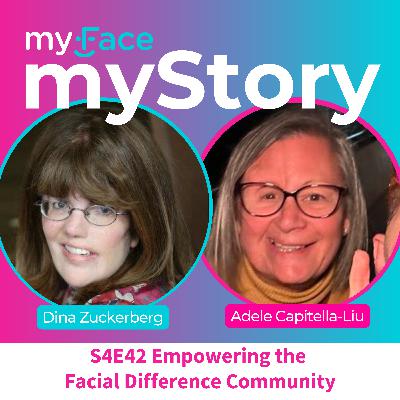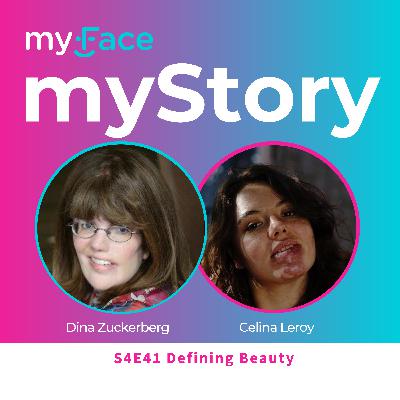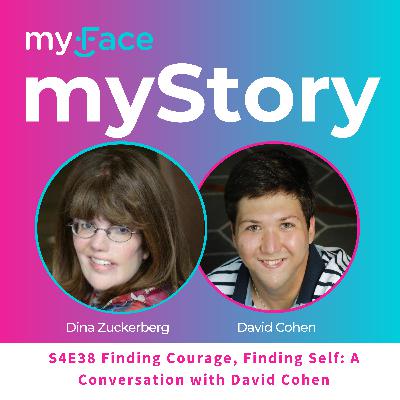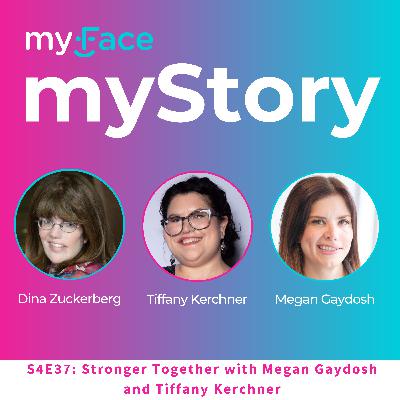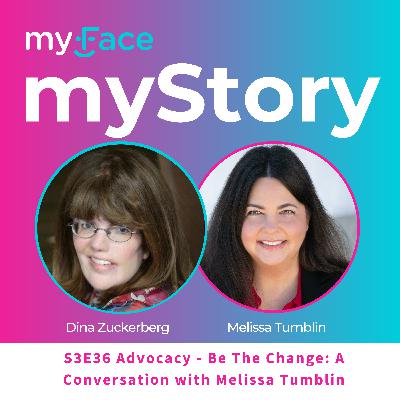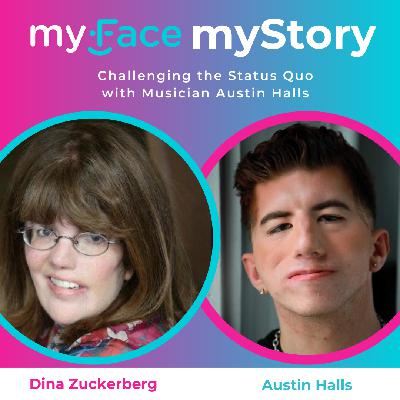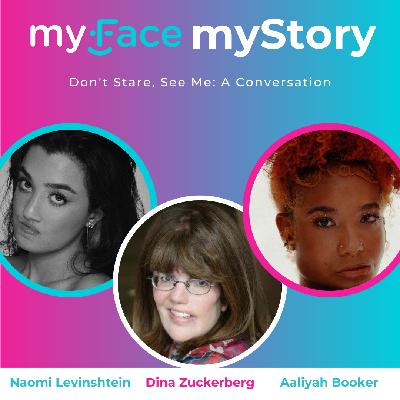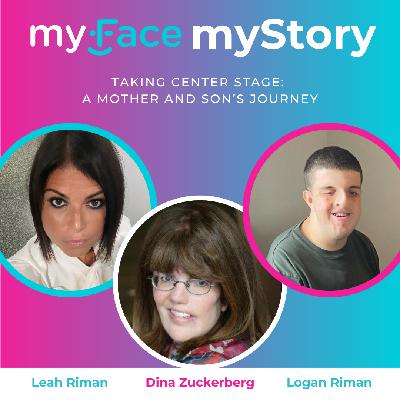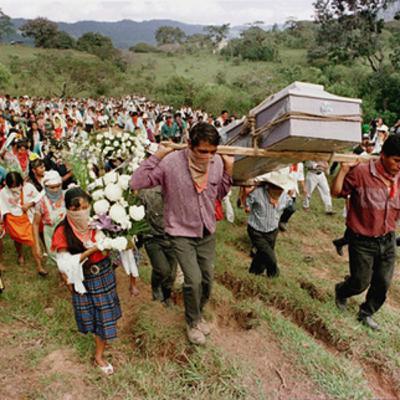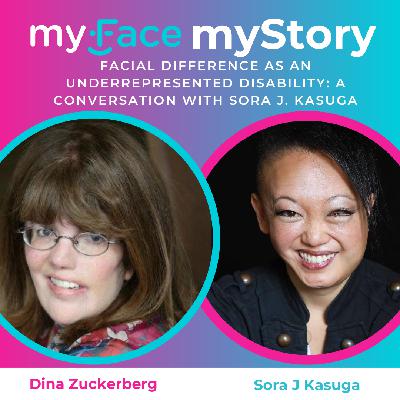Expanding the Concept of Beauty with Justin Stewart
Description
On this month's myFace, myStory podcast episode, host Dina Zuckerberg is joined by Justin Stewart, who will share his journey from being born with frontonasal dysplasia with a cleft in his nose to being a signed model and the adversity and challenges he faced along the way. Through motivational speaking, he encourages others to be true to themselves and to be brave in this action.
- [Announcer] Welcome to "myFace, myStory: Voices from the Craniofacial Community." With your host Dina Zuckerberg.
- Hello and welcome to "myFace, myStory: Voices from the Craniofacial Community." Whether you're watching on YouTube or listening on Apple Podcasts, click Subscribe now to the You'll never miss a future episode. And if you're a fan of "myFace, myStory" rate and review the program on Apple Podcast so we can get a message of inclusivity and empowerment to more people. I'm your host, Dina Zuckerberg, the Director of Family Programs at myFace. I was born with a cleft lip, a hearing loss, and no vision in my left eye. "MyFace, myStory" is about people like us being seen and heard about sharing stories within the craniofacial community and with others. Today I will be joined by Justin Stewart. Renowned as a signed model and influential figure in the world of social media, Justin has left an indelible mark through his impactful participation in numerous viral campaigns, amassing over five million views across various platforms. His portfolio boast features in esteemed publications such as Vogue Magazine, Truly, VH1, "Good Morning America," and "ABC News." With a career adorned by collaborations with prominent brands like Nike, TELFAR, Google, and Rick Moss Maybach Music, Justin has become a recognizable face in the industry. Beyond the glamour of modeling, Justin's platform is a beacon for advocating inclusivity and representation, especially for the craniofacial community. His relentless efforts strive to reshape the modeling and entertainment landscape, emphasizing the importance of diversity and empowerment. Through his work, Justin stands as a beacon of inspiration and change, aiming to pave the way for more inclusive and diverse industry. Welcome, Justin. I really look forward to our conversation.
- Good to see you.
- Hi, Dina. Thank you so much for having me.
- Yes. So I'm looking forward to our conversation. Can you share about your facial differences for those who may not know, and tell us about how many surgeries you've had.
- Yeah, so I've had two surgeries in my life. I have frontonasal dysplasia, which is a form of cleft. So I'm in the cleft family.
- Okay.
- But yeah, I've had two surgeries. One when I was six months old, and the other one was when I was about 13, 12 to 13 years old. Of course, I don't remember the one when I was six months, but the one when I was about 12 or 13, I can remember them taking cartilage from my left ear and doing some reconstructive work with that from my nose.
- Okay, and how has growing up with a facial difference affected you? Give us a glimpse into your life growing up.
- I mean, it was definitely challenging being one of the only in my neighborhood and where I played sports at and where my family resided. I was always the standout. I didn't look like anybody else or resemble anyone, so I always felt like I just stood out where I was the shadow. So growing up, trying to navigate that and trying to figure out who I was and who I wanted to be was definitely a challenge for sure.
- I can relate to that for sure. So what was school like for you? I know you dealt with a lot of bullying.
- Yeah, school was rough. I mean, kids can be cruel. I feel like I had a few friends throughout my life that were very supportive of me, and we're still friends to this day as me as an adult. But just the overall general, like school was rough. It was really rough just dealing with kids, asking questions, kids being ignorant, kids saying mean things. It was rough, but I had a great support system at home. I had a great support system with my friends. And I played sports. Like, that was really, really big for me in my development as well. So it was rough, but we made it through.
- I always say when I talk to the kids when I go into school, they always say that all do you need is one or two good friends to get through it all. So yeah, for sure. So what or who gave you the strength to get through all that bullying growing up?
- I think that's an interesting question. I feel like for me, I knew that all of these things were happening to me for a reason, and I just didn't know what the reason was yet. Like, I knew I was here for a purpose. I knew I would be doing like some really big things in life. I knew that at a very young age, but I just didn't know what. And that was something that really inspired me and kept me motivated and kept me inspired to keep going and keep pushing forward, just that idea of, I don't know what it is or what that reason may be, but I know I have it, and I'm just gonna just keep pushing forward and keep striving for greatness, essentially. And like I said before, I had a great support system. Like my older brother is my hero, my oldest brother, Donald, he's my hero. I have a twin brother named Jordan, was not cleft affected, but we're twins. So we were very, very close growing up. Literally my best friend. So without him I wouldn't be here either. And my little sister Victoria was major when it came to that as well, because I stepped in a role as a older brother. So I knew I had somebody that was looking after me as well. And of course, I have my parents, like I have a great support system between my mom, my dad, my uncles, my grandfather, somebody that I truly, truly admire, my grandfather. So I had the whole package when it came to support.
- Amazing. Yeah. I always say that my family was my greatest support too. So speaking of big things, what made you decide to be a model? How did you get into it?
- That story is really crazy in itself. I was in high school. I think I was a senior in high school and kind of segueing into college, my freshman year of college. And I was just sharing a lot of things on social media. Like, school was really hard, didn't really have a sense of community, and I went on social media essentially looking for that. Like, my whole goal was sharing my story on social media. Wasn't even to be an influencer, it was just to find people that understood what I was going through and just trying to connect with them. And that's how I pretty much started on social media. And a few posts caught a lot of attention. And then that's when I got into sharing more and being an advocate, being a cleft advocate, being an anti-bullying advocate was something that was very, very important to me in the early stages of my career. And from then with all the influencing work came these modeling opportunities that I never dreamed would be possible, never a million years would I have thought that, you know, I could do any of these things. I've never like seen anybody in the craniofacial community in movies, on TV, on the billboards in Times Square, so I just never thought it was possible. And I knew of like athletes or just public figures that had cleft or had a craniofacial difference, but they weren't people that we could touch. They weren't people that were reachable to us. So it was definitely a thing where it was just, like, a lot of nerves, like not really having anybody to talk to about that aspect either that was already in the industry that dealt with some similar things. But I definitely took the leap of faith, and we're here now. And I can just, you know, shoutout my agency for believing in me and taking a chance on me and seeing something that I didn't even see in myself at the time.
- Right, so what was it like for you when you did your first modeling job?
- My first modeling job was actually really cool. My first experience on any set, I would say, it was probably like the experience that you would probably want to hear about it. It was just a lot of nerves. Like, I was really scared. And I remember like asking everybody in my family, like, I needed somebody to come with me because I didn't wanna go by myself, but everybody had something going on in that particular day. So I had to go by myself, which I didn't want to do. And I remember just being there alone, and everybody had like a friend there, or like a family member there, and I was like the only one that was by themselves. And I remember being on set and it was just a lot of lights, a lot of cameras, like, a lot of direction and movement. And it was really hard, it was really hard. My anxiety was through the roof, and it was challenging, it was very challenging. And I remember I met somebody there that day, one of my biggest mentors in my career. Her name's Christiana. And I remember walking in, and I remember seeing her not knowing who she was. She's a very renowned model, been on "America's Next Top Model," like she is big time. And I remember just seeing her not knowing anything about her, not knowing who she was. And she just made the experience so much better for me. Like, I was so anxious, so nervous, so just out of it. And she spoke to me, we talked, she gave me a lot of pointers, she gave me a lot of great advice. And she just overall just made the experience so much better for me, and we ended up keeping in touch. Like, I remember leaving there. I remember calling my mom after I left and I was like, "Listen, I will never, ever, ever do this again in life." Like, that was a conversation I had with my mom at the time. But I can remember leaving and Christiana kept in touch with me, like I went back to school, did some things down there in college, and she kept in touch with me all the way and was very supportive of me with my advocacy work and my modeling





